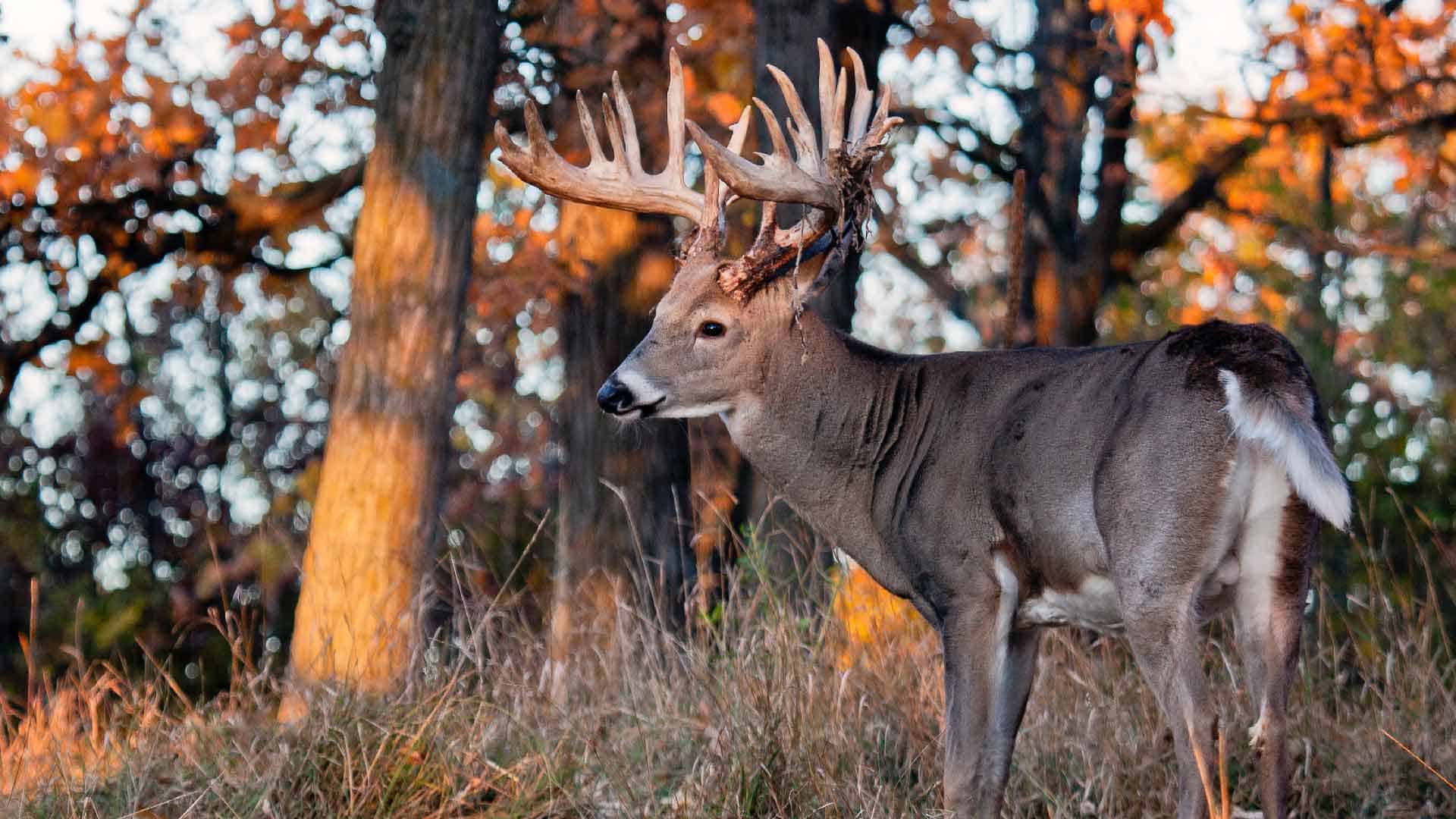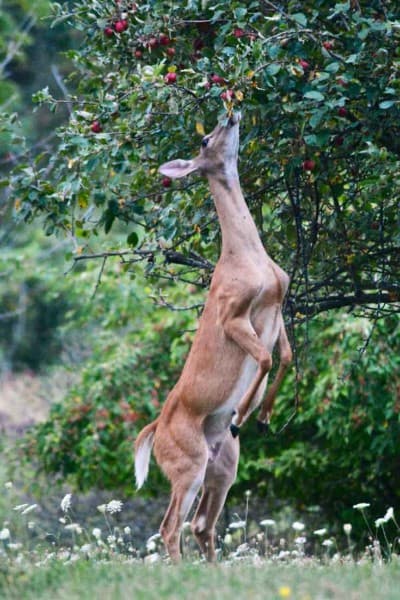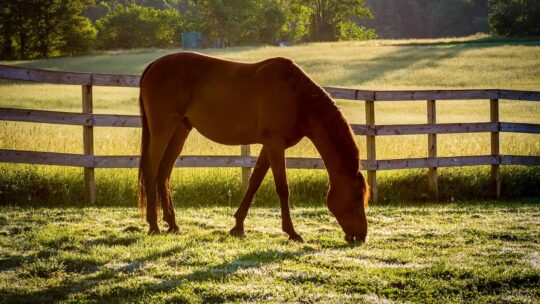Whitetail deer are plentiful in Grae Buck’s home state of Pennsylvania, and can cause just as much year-round damage to his trees and landscaping as they can in your neck of the woods. Although overpopulation, increased development, and stressful climate conditions all lead to increased potential for land damage from deer, there are management strategies that can prove effective in mitigating their pressure. So follow the tips below from Grae on how to protect trees from fall deer browsing and rubbing.

Types of Damage Caused by Deer
Deer browsing and rubbing are the two main threats they pose to your trees and plants. This damage is most common in the fall during mating season, in the winter when deer are browsing for scarce food sources may be scarce and snow-deep, and in the spring when their fat reserves are lowest.
- Deer browse: This may appear in the form of broken or missing twigs, leaves and shredded-looking branches.
- Deer rub: This damage typically occurs in the fall. A telltale sign is physical bark disturbance, often with weeping sap. Deer rubs can significantly and fatally damage a tree quickly, especially younger or smaller, more vulnerable ones.
Deer are creatures of persistent habit, and deterring their visits to your backyard is often easier than eliminating their nuisance behavior once they discover your delicious landscaping.
Strategies to Protect Trees From Deer
Physical barriers are often the most effective means of discouraging deer browse and rub. Plastic tree tubes for young trees or exclusive fencing for larger trees and shrubs are often successful in preventing damage. The primary purpose of both is to keep deer away from your trees’ trunks and limbs. Keep in mind that deer can jump up to 12 ft. and 30 ft. long, as well as fit through narrow gaps in fencing as small as 8 in. wide.
Commercial deer repellents may be useful, too, especially on shrubs and other ornamental landscape plants in your backyard. These repellents fall into two categories—taste and smell—and both typically contain a flavor or odor deer that find unpleasant. Available in spray or granular powder form, either must be routinely applied, making this a more labor-intensive deterrence strategy. That said, a deodorant bar soap hung from the trees or shrubs is a simple, yet effective, odor deterrent, and is relatively inexpensive and easy to implement.

Deer resistant plants can be planted to help discourage deer from damaging your backyard landscaping, namely in areas of the country where their populations are high. While no plant is immune to their winter scavenging, deer-resistant plants often have a bitter taste or discouraging texture, which helps prevent browse.
Additional Resources:
- Penn State Extension: Gardening With Deer
- Penn State Extension: Ornamentals and Deer
- Rutgers: Landscape Plants Rated by Deer Resistance
- USDA: Protecting Trees and Shrubs from Deer



